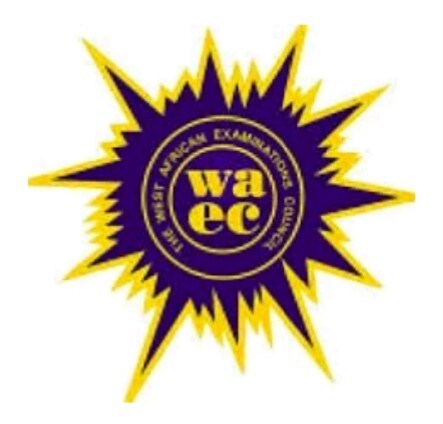Studying the Basic Electronics syllabus is crucial for candidates preparing for the West African Examination Council (WAEC) Basic Electronics exam.
The syllabus provides a roadmap for the topics to be covered and offers valuable notes on key concepts.
About WAEC Syllabus for Basic Electronics 2024/2025
In this blog post, we will present the objectives, examination scheme, and a simplified overview of the Basic Electronics syllabus prescribed by WAEC.
Objectives
The Basic Electronics syllabus aims to assess candidates’ knowledge and understanding of fundamental electronic concepts and principles.
It also evaluates their ability to use electronic devices to construct and test basic electronic systems.
Additionally, the syllabus seeks to foster problem-solving skills through the application of the design process, prepare candidates for further studies in electronics, and enhance their knowledge of entrepreneurial skills and work ethics.
Scheme of Examination
The Basic Electronics exam consists of three papers: Papers 1, 2, and 3, all of which are mandatory. Papers 1 and 2 are composite papers to be completed in one sitting.
- Paper 1: This paper includes fifty multiple-choice objective questions to be answered within one hour, carrying a total of 50 marks.
- Paper 2: Candidates must answer any five out of seven short-structured questions within one hour, accounting for 50 marks.
- Paper 3: A practical paper involving two experiments that candidates must carry out in three hours, with a total of 100 marks.
Alternative to Practical Test
In exceptional cases where practical materials cannot be acquired, WAEC may conduct a theoretical test to assess candidates’ practical skills based on the syllabus.
This alternative test will consist of two compulsory questions to be answered within two hours, totaling 100 marks.
WAEC Basic Electronics Syllabus Overview
-
Electron Emission
- Types and applications of electron emission.
-
Measuring Instruments
- Concepts of measuring instruments.
- Principles of operation and protection of measuring instruments.
-
Semiconductor
- Concepts of semiconductor.
- Semiconductor materials like silicon and germanium.
- Doping of semiconductors.
- Formation of p-type and n-type semiconductors.
-
Semiconductor Diodes
- Introduction to diodes.
- Biasing techniques for diodes.
-
Transistors
- Understanding transistors and their applications.
-
Other Semiconductor Devices
- Overview of thermistors, diacs, triacs, thyristors, etc.
-
Integrated Circuits
- Circuit symbols and principles of operation.
- Applications of integrated circuits.
-
Circuit Analysis
- Application of integrated circuits.
- Explanation of RAM, ROM, and EPROM.
-
Electric Current
- Structure of atoms.
- Conductors and insulators.
- Direct and alternating currents.
- Sources of direct and alternating currents.
-
Relationship Between Voltage, Current, and Resistance
- Ohm’s law and its application.
- Simple calculations involving current, voltage, and resistance.
-
Electric Power
- Understanding electric power.
- Relationship between power, current, and voltage.
- Calculation of electric power in a given circuit.
-
Circuit Components
- Types of resistors, capacitors, and inductors.
- Symbols, signs, and units of measurement.
- Color coding and rating of resistors and capacitors.
-
Electric Circuit
- Introduction to electric circuits.
- Circuit boards and their functions.
- Circuit arrangements: series, parallel, and series-parallel.
- Calculations involving circuit arrangements.
-
Alternating Current Circuits
- R-L-C circuits.
- Principles of generators.
- Power in A.C. circuits.
- Power factor and its correction.
-
Amplifiers
- Voltage and power amplifiers.
- Push-pull amplifiers.
- Operational amplifiers.
-
Power Supply
- D.C. power supply units.
- Rectification techniques.
-
Oscillators, Multivibrations, and Digital Basics
- Oscillators and their applications.
- Non-sinusoidal multivibrators.
- Principles of operation and applications.
- Introduction to digital basics, including number systems and logic gates.
-
Communication Systems, Transducers, and Sensors
- Electromagnetic waves.
- Characteristics and principles of radio waves.
- Stages of a radio receiver.
- Fault detection in radio receivers.
- Transmitters, receivers, communication methods, and transducers.
-
Control System
- Understanding servo mechanisms.
-
Magnetic and Electric Fields, Electromagnetic Induction/Transformers
- Electromagnetic fields.
- Electromagnetic induction and its applications.
- Self and mutual induction.
FAQs
What topics are covered in the WAEC Basic Electronics syllabus for 2024/2025?
The WAEC Basic Electronics syllabus for 2024/2025 includes topics such as:
- Basic concepts of electronics
- Electronic components (resistors, capacitors, diodes, transistors)
- Circuit diagrams and symbols
- Ohm’s law and its applications
- Series and parallel circuits
- Signal processing and modulation techniques
- Basic digital electronics concepts
How can I access the WAEC Basic Electronics syllabus for the upcoming examination?
You can access the WAEC Basic Electronics syllabus by visiting the official WAEC website or checking with your school’s examination office. The syllabus is often available as a downloadable PDF or can be viewed online. It’s essential to review the syllabus to understand the key topics and the structure of the exam.
Are there recommended textbooks or resources for studying Basic Electronics according to the WAEC syllabus?
Yes, there are several recommended textbooks and resources for studying Basic Electronics. Some commonly suggested titles include:
- “Basic Electronics” by Bernard Grob
- “Electronics for Beginners” by David B. Smith
- WAEC past question papers for Basic Electronics, which can provide insight into exam patterns and frequently asked questions. Additionally, online platforms and educational websites may offer supplemental resources and practice exercises aligned with the syllabus.
Conclusion
The Basic Electronics syllabus provided by WAEC serves as a vital resource for candidates preparing for the exam.
It covers a wide range of topics related to the technology, manufacturing, maintenance, and repair of domestic and industrial electronic equipment.
By studying this syllabus and utilizing the recommended textbooks, candidates can acquire the necessary knowledge and skills to excel in the examination and lay a solid foundation for future endeavors in electronics.






